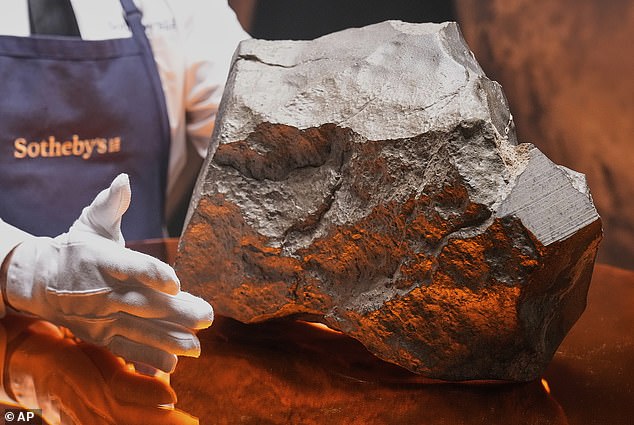
World’s Largest Martian Meteorite: 25kg After 140-Million-Mile Journey Set for £3M Auction
Massive Martian Meteorite Hits Auction Block for Millions
The largest Martian meteorite ever discovered, a 25-kilogram (55-pound) specimen named NWA 16788, is set to sell for an estimated £1.5–3 million ($2–4 million) at Sotheby’s New York natural history auction this week. As of Tuesday, bidding had already reached £1.2 million ($1.6 million), underscoring its rarity and scientific value. This extraterrestrial rock, measuring 38 x 28 x 15 cm, represents nearly 7% of all Martian material on Earth and dwarfs previous finds by 70%.

From Mars to Earth: A 140-Million-Mile Journey
Martian meteorites reach Earth after violent asteroid impacts blast debris into space. Only 400 confirmed Martian rocks exist here, compared to 77,000 other meteorites. NWA 16788’s size suggests it originated from one of just 19 massive Martian craters capable of ejecting such fragments. “This meteorite is more than double the size of any previous Martian sample,” said Cassandra Hatton of Sotheby’s.
Discovered in Niger in 2023, its glassy surface—scorched during atmospheric entry—hinted at its cosmic origin. Lab tests matched its composition to data from NASA’s 1976 Viking mission, confirming it as Martian. The rock’s minimal weathering indicates it landed relatively recently.

A Rare Glimpse into Martian Geology
Analysis revealed NWA 16788 contains maskelynite, a glass formed by asteroid impacts, and olivine-microgabbroic shergottite—a volcanic rock comprising just 5.4% of Martian meteorites. This blend offers clues about Mars’ geologic history, from ancient magma activity to colossal collisions.
Auction Highlights: Dinosaur Fossils and Moon Rocks
The event also features a 2.5-kilogram lunar sphere, Siberian meteorite fragments, and a star lot: a juvenile Ceratosaurus skeleton. Measuring 3 meters long, this carnivorous dinosaur fossil—unearthed in Wyoming in 1996—is expected to fetch up to $6 million.

Why Space Rocks Matter
Meteorites like NWA 16788 are time capsules, offering insights into planetary formation. While asteroids are rocky remnants orbiting the Sun, and comets are icy bodies with distant orbits, meteorites are fragments that survive their fiery plunge to Earth. This Martian giant, once a living room spectacle, now bridges interplanetary science and high-stakes collecting.
Images: Sotheby’s/News Licensing


